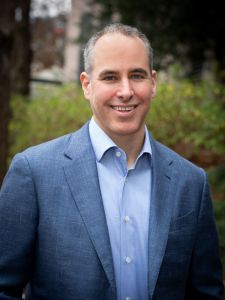Champlain Towers South, Two Years On
Some of the same problems and dynamics remain in South Florida that led to the deadly collapse
By Julia Echikson June 24, 2023 8:00 am
reprints
When Champlain Towers South in Surfside, Fla., fell in late June 2021, it exposed a familiar dysfunction within condo buildings: fights among owners over expensive repairs and lax oversight.
Two years on — while the cause of the deadly tragedy has yet to be determined — lawmakers enacted building reforms, forcing condo owners to act promptly. But experts say many of the same issues have endured. Delays for building rehabilitation are sure to emerge, and fights remain ubiquitous.
The condo owners of the Champlain building, erected in 1981, had long fought over its maintenance. One complaint between the association and a resident ended in litigation, which was settled in 2018. That same year, the association had begun preparations for the structure’s 40-year recertification. An engineer who inspected the property found signs of “major structural damage” to the concrete slab below the pool deck and “abundant” cracking in the parking garage under the 13-story building.
Despite the dire warnings, the squabbles continued. In 2019, the majority of the condo board resigned as it struggled to mount a response to the damning report, according to The Washington Post. Repairs got underway in 2021, only a few months before the collapse, and past the building’s recertification deadline. By then, the cost had ballooned to $15 million, averaging $110,000 per unit.
These battles are fairly routine among condo owners across Florida, many of whom do not want to pay for costly renovations. Typically, one faction of residents only wants to do minimal and cosmetic upgrades and another faction, often seniors stuck on fixed incomes, could not afford extensive repairs. Frequently, members of condo associations defer taking significant action and waive levying fees to bolster reserves, leaving little savings for maintenance. These, and other issues, sometimes render condo boards fairly impotent.
“There’s too much emotion involved. It’s too much of a popularity contest,” said Greg Main-Baillie, a Colliers broker who helps associations manage construction projects.
Few buildings even complete the process. Take Bay Harbor Islands, a wealthy enclave just west of Surfside. Just one of 14 buildings in Bay Harbor had completed a 40-year recertification process due in 2020 by soon after the Surfside collapse. Six of the property owners never responded to the city’s notice.
After the collapse, Florida lawmakers stepped in to address the issue of condo maintenance, and passed legislation in 2022 to force unit owners to act. Building recertification is now required 30 years after construction, or 25 years if the structure is within three miles of the coast, and every 10 years thereafter. The laws ban condo associations from waiving reserve requirements and require properties to complete inspections by 2025.
But many condo associations will likely struggle to comply on time. Before the new regulations were enacted, only Miami-Dade and Broward counties mandated that aging buildings be recertified. Now, all 67 counties have those requirements. The uptick in demand for inspections has created a shortage of qualified engineers in Florida, Main-Baillie said. Some of his clients are already facing delays.
Skirmishes among condo owners remain common, too. But no longer do boards ponder whether to proceed with repairs. “That’s out of their hands now,” said Harold Lewis, senior partner of Haber Law, who represents condo associations and unit owners. The fights now revolve over how to execute the renovations, such as: “Is the engineer we brought in the right one? Could somebody else potentially look at our building differently? Could we have found somebody else who could say our repair should be lower?”
Some disputes still disintegrate into lawsuits. Last year, 10 condo owners of the Palm Bay Yacht Club, a 27-story waterfront condominium in Miami completed in 1982, sued their association and its property management firm Akam, alleging fraud and negligence over a $46 million special assessment. The proposed work was set to average nearly $200,000 per unit. (Haber law represented the association in the suit.)
These looming assessments have created something of a gold rush among both developers and owners. As some condo owners seek to avoid paying mounting bills, developers have offered to buy out entire condominiums with plans to tear down the existing structure and build a new condominium development. They often target properties along the water, which command the highest prices.
Earlier this year, Terra offered $500 million for an oceanfront condo complex, built in 1966, in Miami Beach. By gross margins, the deal could mark the largest buyout in South Florida to date. But these buyouts are difficult to close because they often require the approval of most, if not all, condo owners, and Terra’s deal has yet to close. Further up the coast, the residents of oceanfront trailer park Briney Breezes rejected a $503 million buyout offer for their property which is not subject to the same reforms, protesting that the buyout offer wasn’t high enough.
Other condo owners are less fortunate. If there are no buyout offers, and renovations aren’t completed, insurance companies may decline to provide coverage. And if unpaid bills mout, condo complexes can fall under receivership. Finding new housing that’s comparable has become difficult following the pandemic, when droves of wealthy Northerners decamped to the Sunshine State, which sent prices surging and diminished supply.
“The cost of the dream, of waking up to an ocean view, has clearly gone up,” Lewis said.
As some condo owners grapple with the new realities of waterfront living, the cause of Champlain’s collapse still remains unknown. The leading investigation by the federal government’s National Institute of Standards and Technology (NIST) could take months, even years, to conclude. But NIST’s investigators said this month that Champlain’s design was flawed, the building had failed to meet codes, and that its pool deck was weak.
In Miami, an area that prides itself on championing the next big thing, even the ill-fated site is set to welcome another condominium. Earlier this month, Damac International, the Dubai-based developer that purchased the 1.8-acre parcel for $120 million a year ago, unveiled plans to build a 12-story luxury condominium and hired the firm of the late star architect Zaha Hadid to design the project.
“To see a high-end development built would be very hard for all of us,” Carlos Wainberg, who lost family members in the collapse, said during a court hearing in 2021. The land is “kind of a burial site.”


